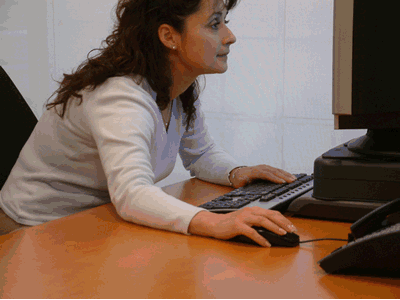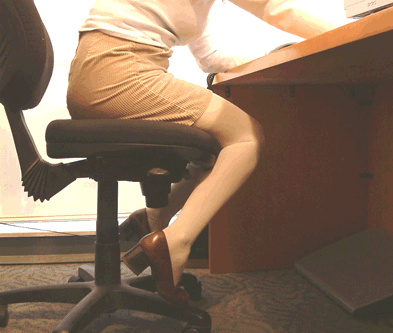POSTURE
The key
to comfort is making sure your body is always in a relaxed, natural
position.
Although there is no "ideal" working posture for every
person, the following are practical solutions to minimize muscular
discomfort and suggests ways to help you find that "ideal"
work position that is best for you.
The following are suggested guidelines:
|
- Experiment with
the position of your chair, keyboard, and monitor to find
the arrangement that works best for you.
- The ideal work
position is to have your arms hanging relaxed from your
shoulders.
- If you use
a keyboard, your arms should be bent at right angles at
the elbow, with your hands held in a straight line with
the forearm and your elbows close to the body. Your head
should be in line with your body and slightly forward.
- Adjust your
seat so that you are comfortable, making sure your back
is supported and the seat pan is at a height so that your
thighs are horizontal, there is no pressure behind the knees,
and feet are flat on the floor.
- The chair may
need to be adjusted higher or lower in order to get your
forearms parallel to the floor. A footrest may be helpful
for foot support.
- Adjust your
monitor to a comfortable viewing height that allows your
eyes to see the screen at a comfortable angle and when you
look at the center of the screen your head is not tilting
up or down but straight ahead.
- Use a soft touch
on the keyboard and try to keep your shoulders, hands, and
fingers relaxed.
- Using a document
holder may be helpful to position source documents at the
same distance as the screen.
- Organize your
work area so that all work material and tools are within
easy reach and at a comfortable level.
|
|
|
|
|
|

